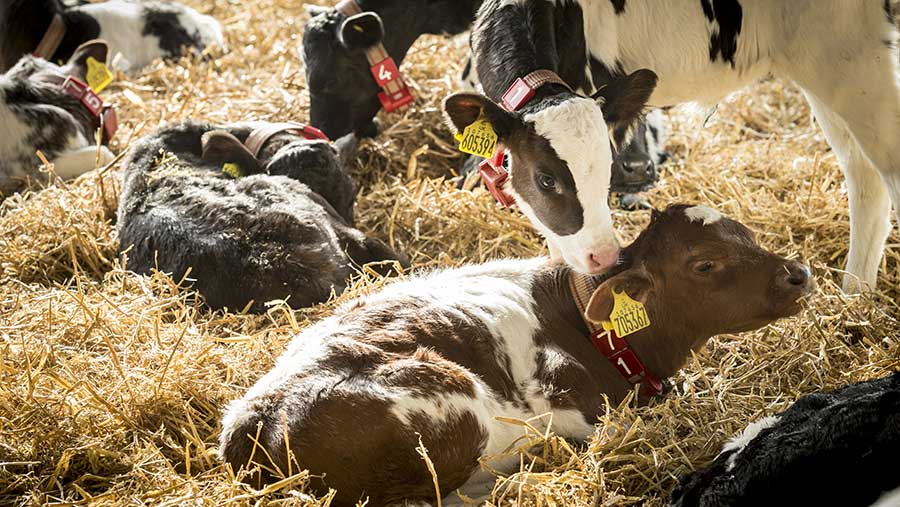Top Holstein bulls wrongly neglected because of inbreeding fears
 © Jim Varney
© Jim Varney Commercial Holstein-Friesian farmers have been warned against neglecting the breed’s leading sires over unfounded inbreeding fears.
Many farmers avoid popular sire lines from O-man, Goldwyn and Shottle because “they’ve been used everywhere”, when in reality these sires of popular lines give “safe levels of inbreeding” on average.
AHDB Dairy told the British Cattle Conference heard on Tuesday (19 January) the general guideline for inbreeding is 6.25%, although the level of inbreeding was rising fastest in the Holstein, increasing from 1% to 5% between 1990 and 2015.
Dr Darren Todd of Holstein UK said farms risk “missing out” on genetic progress and the best PLI bull options through unfounded inbreeding fears, recommending a “cautious approach” was taken to choosing popular sires.
See also: Dairy breeding tool could prevent deadly genetic disease
He stressed the importance of using breeding programmes with semen companies or breed societies to assess inbreeding coefficients and underlined the impact genomic selection has had on the age of bulls being used.
“In the future, genomic technology promises to increase the accuracy of inbreeding calculations,” he told Farmers Weekly. According to AHDB this would be through “looking at the DNA profile to give a genomic inbreeding value, based on the genetic markers present.”
“Because of genomic bull selection, the generation interval of bulls is shorter, with quicker turnover of bulls. This means that popular bulls like O-man, Goldwyn and Shottle are being pushed back in the generations which reduces the inbreeding risk.”
Dr Todd said it was “important” for the industry to know that an inbreeding coefficient can apply to “an individual animal or a proposed breeding”.
He added: “Inbreeding coefficient is about the same gene coming down both paternal and maternal sides. We can use these popular bulls but with a bit of caution. The best way of keeping an eye on this is using mating programmes to calculate inbreeding percentage.”
Marco Winters, head of genetics at AHDB Dairy, stressed the fact younger bulls are now being used can limit what the industry knows about them.
He added: “Many young sires are not well established and its impossible to trace the full back pedigree of these animals. In the past many people used Shottle, O-man and Goldwyn but now we see new bulls every month which are also bred by young bulls and some also bred from dams from young bulls and we don’t know as much about them. This makes it difficult for farmers to do the checking themselves.”
- Do as much research you can before talking to your sales rep
- Independent advice is important
- The resulting calf should not have common grandsires as a rule of thumb
- Avoid anything which results in an inbreeding coefficient above 6.25%
- Use Holstein UK or AI company breeding programmes
